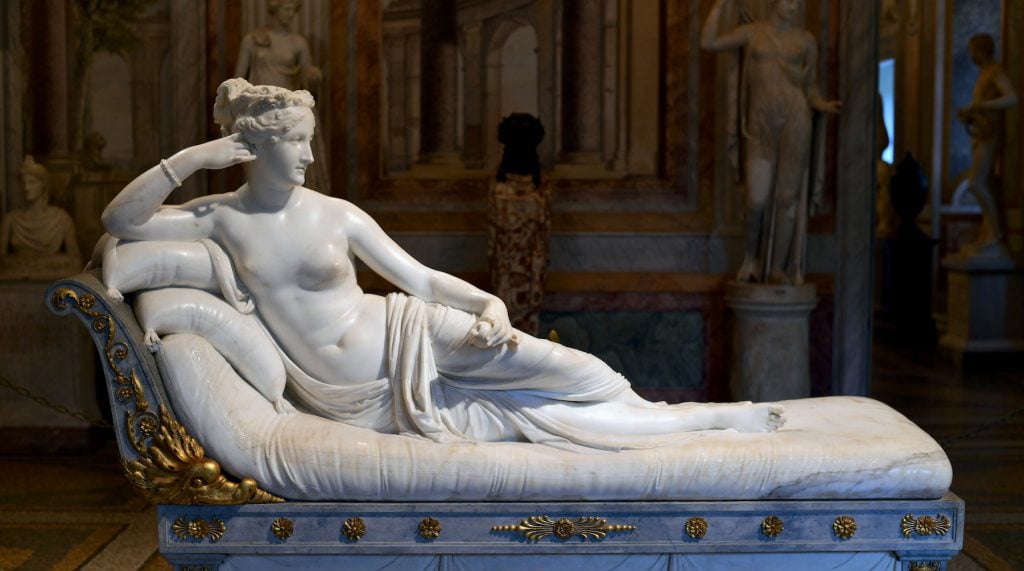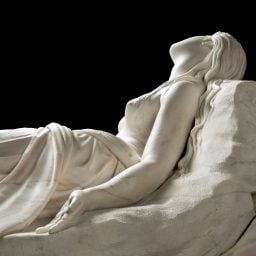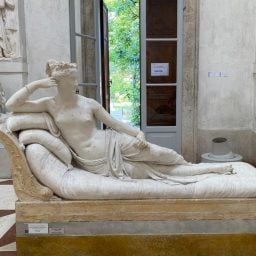“Every veil must fall before Canova,” Pauline Borghese coyly remarked of Venus Victrix, Antonio Canova’s 1808 marble portrait depicting her as the victorious goddess of love. The comment, which seemed to suggest she had posed nude for the sculptor, stirred an immediate sensation—though scandal, for the sister of Napoleon Bonaparte and new bride of Prince Camillo Borghese, was nothing new.
In 1805, when Canova began the sculpture, Borghese was 25 years old and in her second marriage, after her first husband, General Charles Leclerc, died of an illness in Santo Domingo. Napoleon had dispatched the couple to the Caribbean island under the guise of military service while hoping to quell rumors of his sister’s various romantic indiscretions in Europe. Her marriage into the esteemed Borghese family, which came only eight months after Leclerc’s death, further rattled polite society.
Camillo Borghese commissioned the sculpture in 1804; though the new marriage was already strained, Borghese was captivated by his wife’s beauty and wanted a sculpture from the famed Canova to show privately (Pauline and Camillo would be estranged before the sculpture was completed). Canova, who was known for his staid personality, was generally averse to portrait commissions, and first hoped to depict Pauline in the guise of Diana, the virgin goddess of the hunt. Pauline, perhaps better understanding her public persona, insisted instead on the goddess of love. Venus Victrix (Venus Victorius), which remains on view at the Galleria Borghese in Rome, portrays Pauline recumbent on a sofa, nude from the waist up, hair up and filled with adornments, and casting her gaze off to her side, as though someone has just entered the room.
This year marks the 200th anniversary of Canova’s death, so in time for Valentine’s Day, we decided to take a closer look at his portrait of the amorous Pauline Borghese. Here are three fascinating facts that may change the way you see it.
A Portrait of Political Power
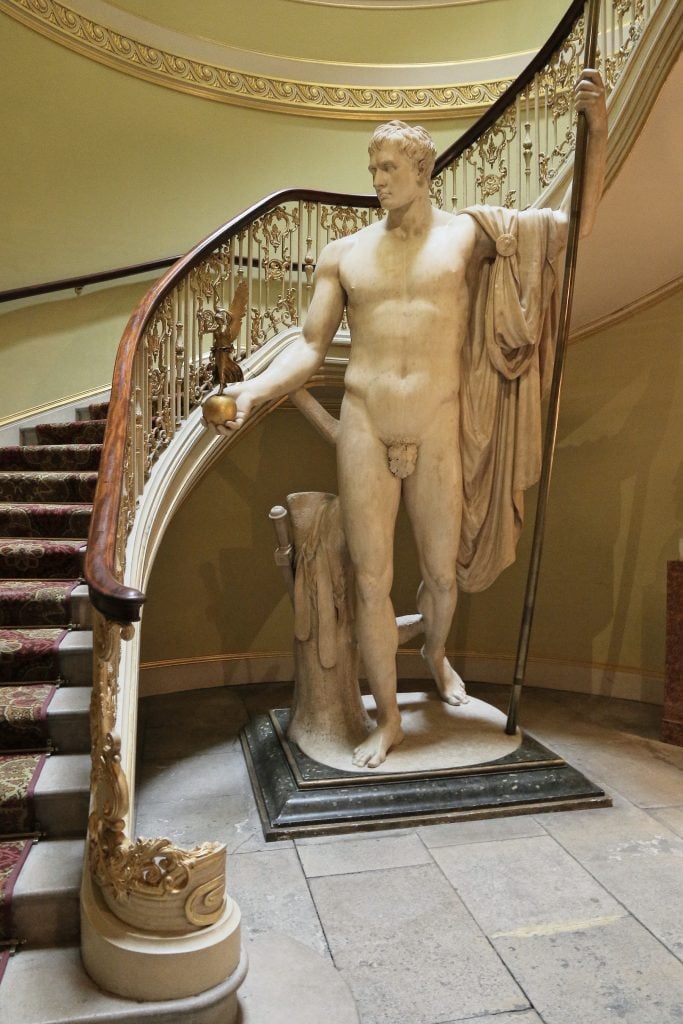
Antonio Canova, Napoleon as Mars the Peacemaker (1802–06). Collection of Apsley House, London.
While Venus in repose may not present as political propaganda at first blush, a close reading of the sculpture’s details hints at the union of two of Europe’s most powerful families.
Pauline holds a small apple in her left hand, an allusion to the myth of the Judgement of Paris, in which the mortal Paris, known for his fairness, selects Venus as the most beautiful goddess of Olympus, awarding her the prize of an apple. Although the Borghese family did not arrive in Rome until the 16th century, the family adopted the symbol of Venus—whose son Aeneas, per legend, founded the city—as part of its ancestral mythology. In this sense, the image of Venus underscored the family’s long-standing political legitimacy while embracing the Bonaparte alliance and bringing myth to life in the body of Pauline Borghese. The sculpture was reinforced by a 1779 painting of the Judgement of Paris by Domenico de Angelis, which hung on the ceiling above the statue and which itself takes direct inspiration from relief on the façade of the Villa Medici.
For the Bonaparte family, which was expanding its dominion throughout Europe, the Borghese mythology strengthened imperial claims to power. While by the turn of the 19th century, the Venus Victrix was read in the sense of “conquering men’s hearts,” the ancient motif originally had militaristic associations as the Romanized version of the Greeks’ Aphrodite Areia. She was often shown in full armor, and this itself was inherited from Ishtar, the Eastern goddess of war. In the Roman era, generals were known to call on Venus Victrix before battle and offer devotion to her cult.
Canova tended to portray his subjects as mythological figures (he had depicted Napoleon as Mars the peacemaker). On one hand, this reflected the 18th-century trend toward breaking down the traditional parameters of genre and elevating portraiture to a higher status by adding elements of invention and imagination. On the other hand, by casting political figures in the guise of mythological characters, Canova managed to shroud political significances within his artistry, ensuring a modicum of safety for his sculptures during a fraught political age marked by widespread iconoclasm.
Ironically, however, the union to the Bonaparte family cost the Borghese family many of their most priceless artworks, with some 344 pieces being sent to France at Napoleon’s request. These make up the Borghese collection of the Louvre today.
Canova Cast Her in Plaster
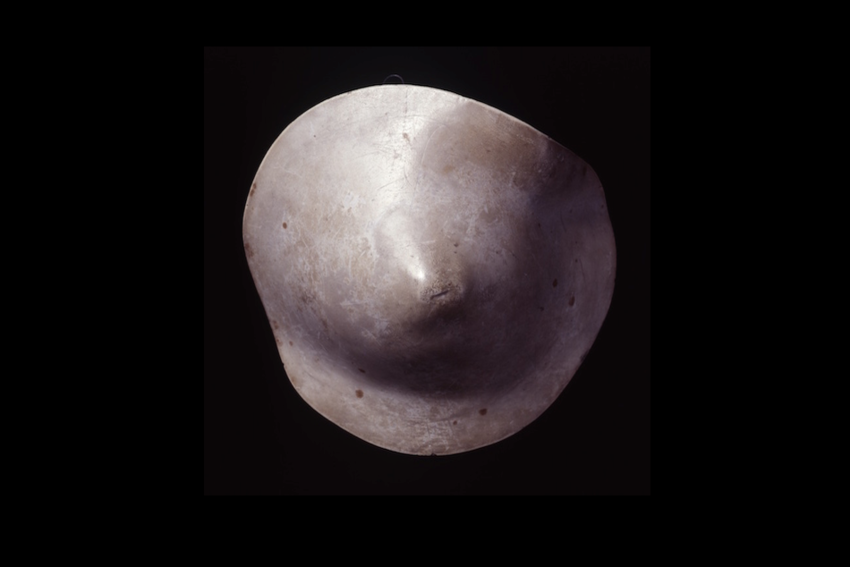
Antonio Canova’s plaster cast of the right breast of Pauline Bonaparte Borghese (c. 1804).
While any statue of a nude Pauline Borghese would have scandalized the public, Canova’s sculpture was subject to a very specific criticism: being too lifelike.
“[T]he extreme virtuosity of Canova’s treatment of the body of the goddess and in particular his ability to suggest the softness and luster of living skin…made the statue a celebrity,” writes Caroline van Eck in her essay “Works of Art That Refuse to Behave: Agency, Excess, and Material Presence in Canova and Manet.”
Canova’s methods for achieving such veracity were equally suspect. Canova made a moulage à vif, or mold of Borghese’s body, which is preserved in the collection of the Museo Antonio Canova Museum in Possagno, Italy. But this method, Van Eck writes, “was considered slightly disreputable because it was felt to be a sign of poor craftsmanship on the sculptor’s part,” and also brought with it a “whiff of scandal because of the intimacy it implied between the sculptor and his model.” (Canova had also been criticized for his use of finishing treatments, including wax and grind water, which smoothed and stained the surface of the marble. Such techniques were considered by some as deceptive.)
As Van Eyck writes, neoclassicist theorists thought such methods, and their intensely lifelike results, “distracted from the idealism of high art, with an emphasis on the artistic distance between the object and the living being, and would excite the baser instincts of viewers.” Venus Victrix is, she says, the “summum of artificiality…not artistic distancing. The marble is made to suggest a living and breathing body.”
It Was Meant to Be Seen by Candlelight
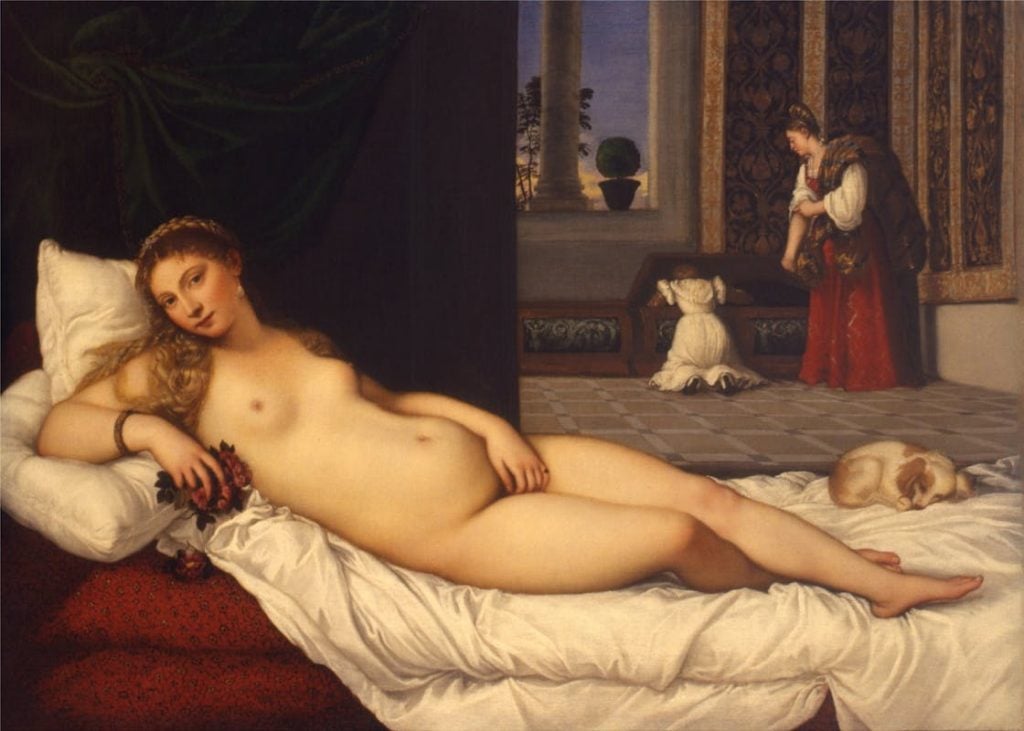
Titian, Venus of Urbino (1538). Collection of the Uffizi Gallery, Florence.
While today art lovers can see Venus Victrix at the Villa Borghese during museum hours, the sculpture was actually intended to be enjoyed in the evening by candlelight, as was the trend in the late 18th and early 19th centuries. What’s more, the sculpture’s draped base originally contained a mechanism for rotating it (Canova’s other sculptures also included this feature). The mechanism was considered a fashionable way for viewers to observe a work from all angles without having to move.
Though now moot, these two conditions for seeing the sculpture had significant effects, emphasizing the painterly qualities of the sculpture, particularly the effect of chiaroscuro, and would have made more pronounced the sculpture’s painted precedents, including Titian’s Venus of Urbino (1538).
“These nocturnal viewings of Pauline Borghese as Venus were part of the fashion for looking at statues by torchlight that had originated in late 18th-century Rome,” writes Van Eck, noting that French diarist Joseph Joubert “observed how, under such viewing conditions, in the flickering light the statue seemed to move toward the viewer from the dark. All this resulted in an almost uncanny suggestion of living presence.”
Ultimately, however, responses to the sculpture’s verisimilitude become so intense that Pauline Borghese asked for the sculpture to be removed, and for decades the sculpture resided in a custom-made wooden crate, under lock and key.
